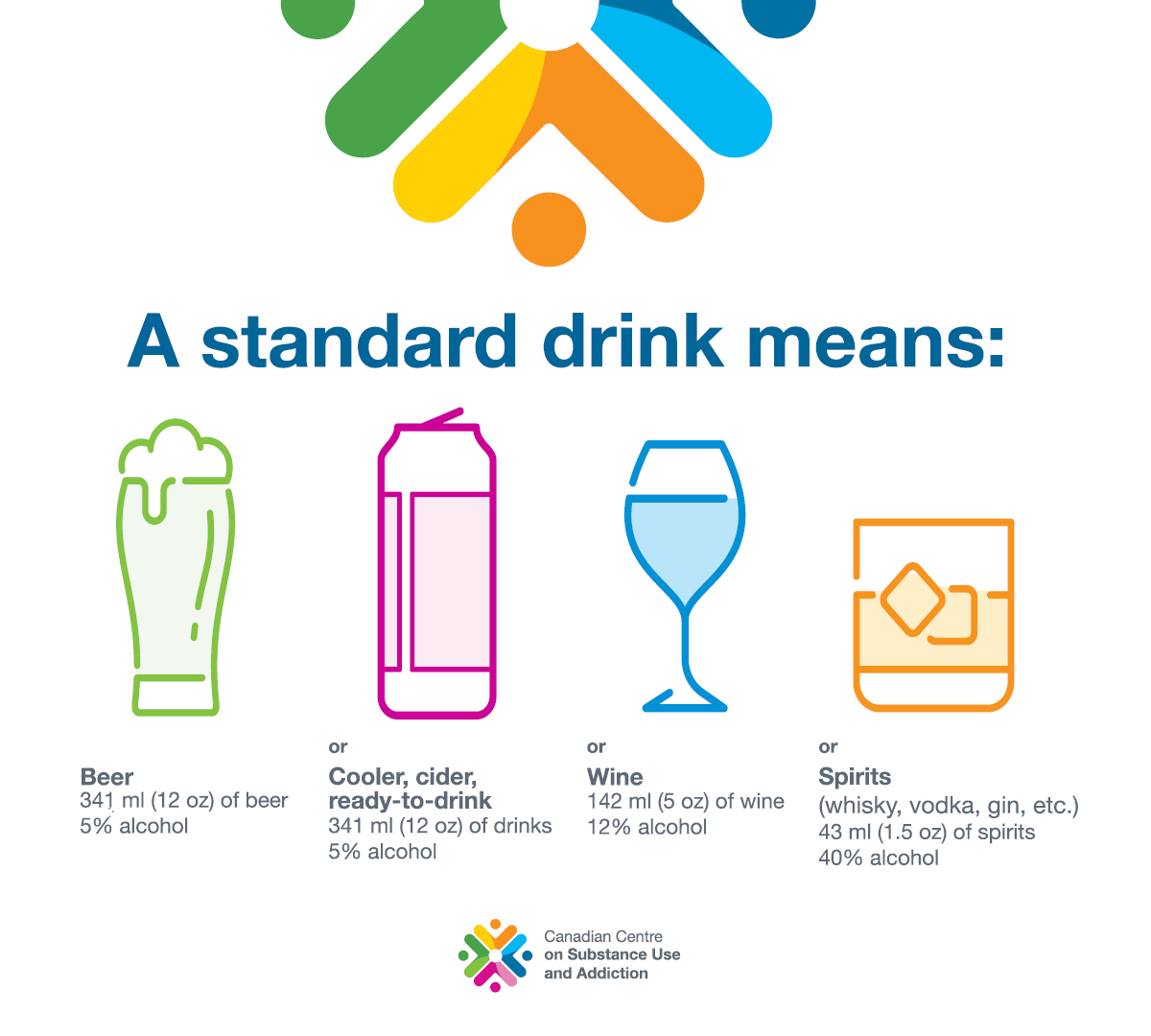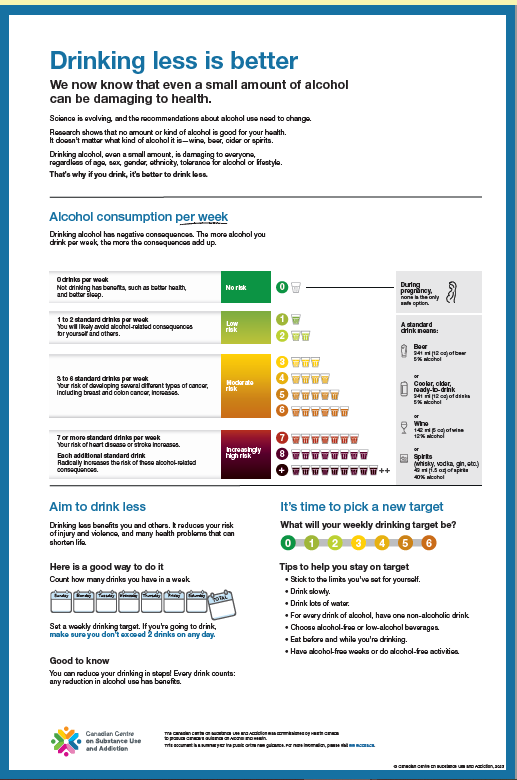Alcohol content in drinks
Get a better idea of how much you drink
Canada’s Guidance on Alcohol and Health shows that more than 6 standard drinks a week puts you at an increasingly high health risk for health issues. But what is a standard drink size?
In Canada, one standard drink is:
- One 341 ml (12 oz) bottle of 5 per cent alcohol beer, cider, or cooler.
- One 43 ml (1.5 oz) shot of 40 per cent hard liquor (vodka, rum, whisky, gin etc.).
- One 142 ml (5oz) glass of 12 per cent wine.

Drinking less is better
There is a continuum of risk that shows the risk for those who consume two standard drinks or less per week is low; for those who consume between three and six standard drinks per week the risk is moderate; those who consume seven or more standard drinks per week have increasingly high risk.
What is binge drinking?
As per the Canadian Centre on Substance Use and Addiction report on alcohol and health, binge drinking is usually defined as consuming five or more standard drinks in one setting for men, or four or more standard drinks in one setting for women.
Binge drinking is a very risky pattern of alcohol consumption. It is a well-established risk factor for death from any cause, including unintentional injuries, violence, heart disease and high blood pressure, inflammation of the gastrointestinal system, and for developing an alcohol use disorder (how we now describe “addiction” or “dependence” on alcohol).
Drinking many drinks in one sitting has a far greater impact on health and social harms than having that same number of drinks spread out over a number of days.
Alcohol labelling to inform
- Currently, Canada uses the less effective practice of percent by volume (%ABV) labelling on alcohol, which does not assist people in adhering to alcohol guidance.
- Labelling Standard Drink information on Alcohol enables people who drink to make the connection between how much they are drinking and the risk level they are willing to accept according to Canada’s new Guidance on Alcohol and Health.
- There is low awareness among Canadians of what a standard drink is, and people tend to overestimate what a standard drink is.
- In Canada there is low awareness of the health risks posed by alcohol. Only one in four (25%) are aware that alcohol causes cancer, despite alcohol being classified as a carcinogen since 1987.












